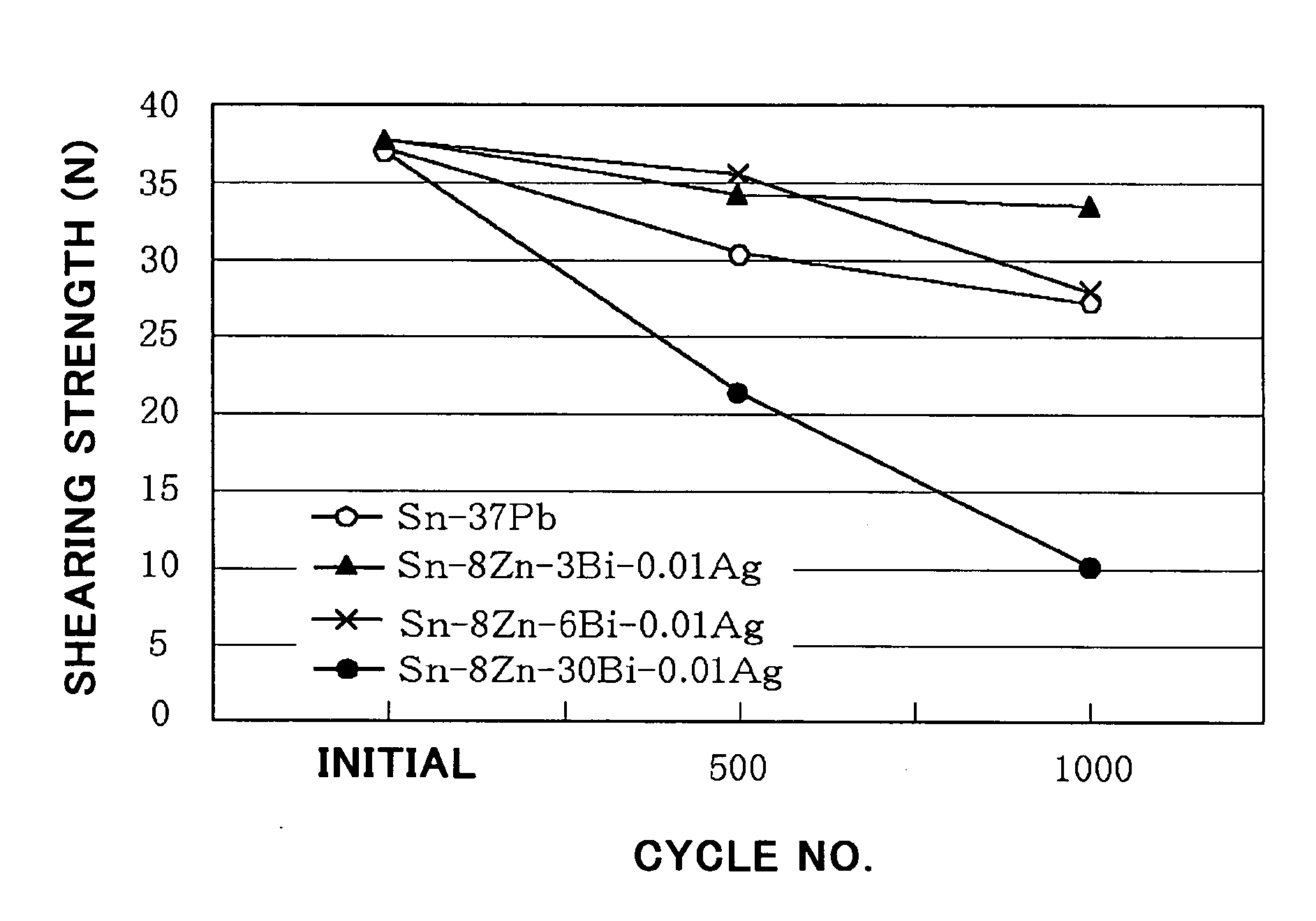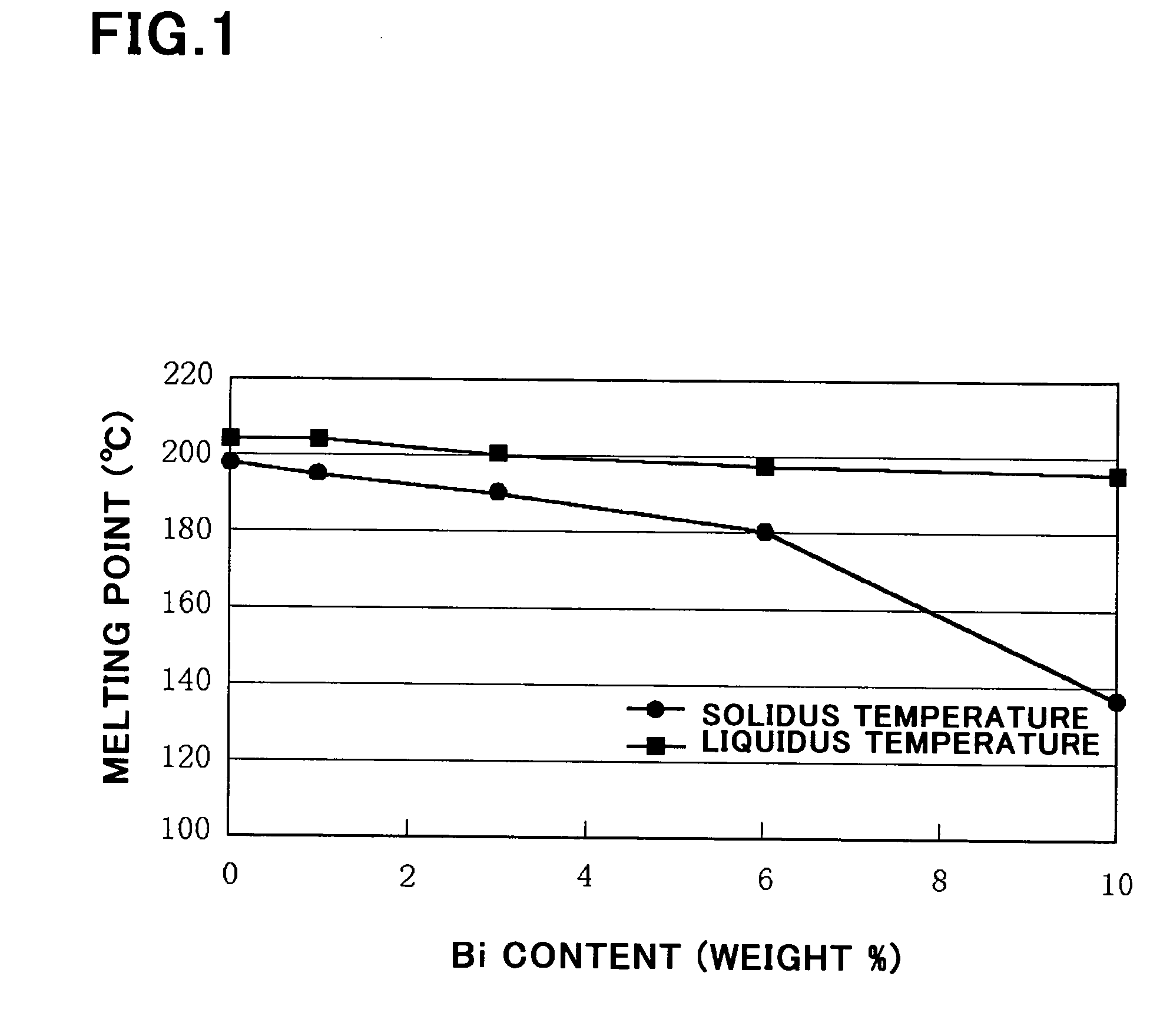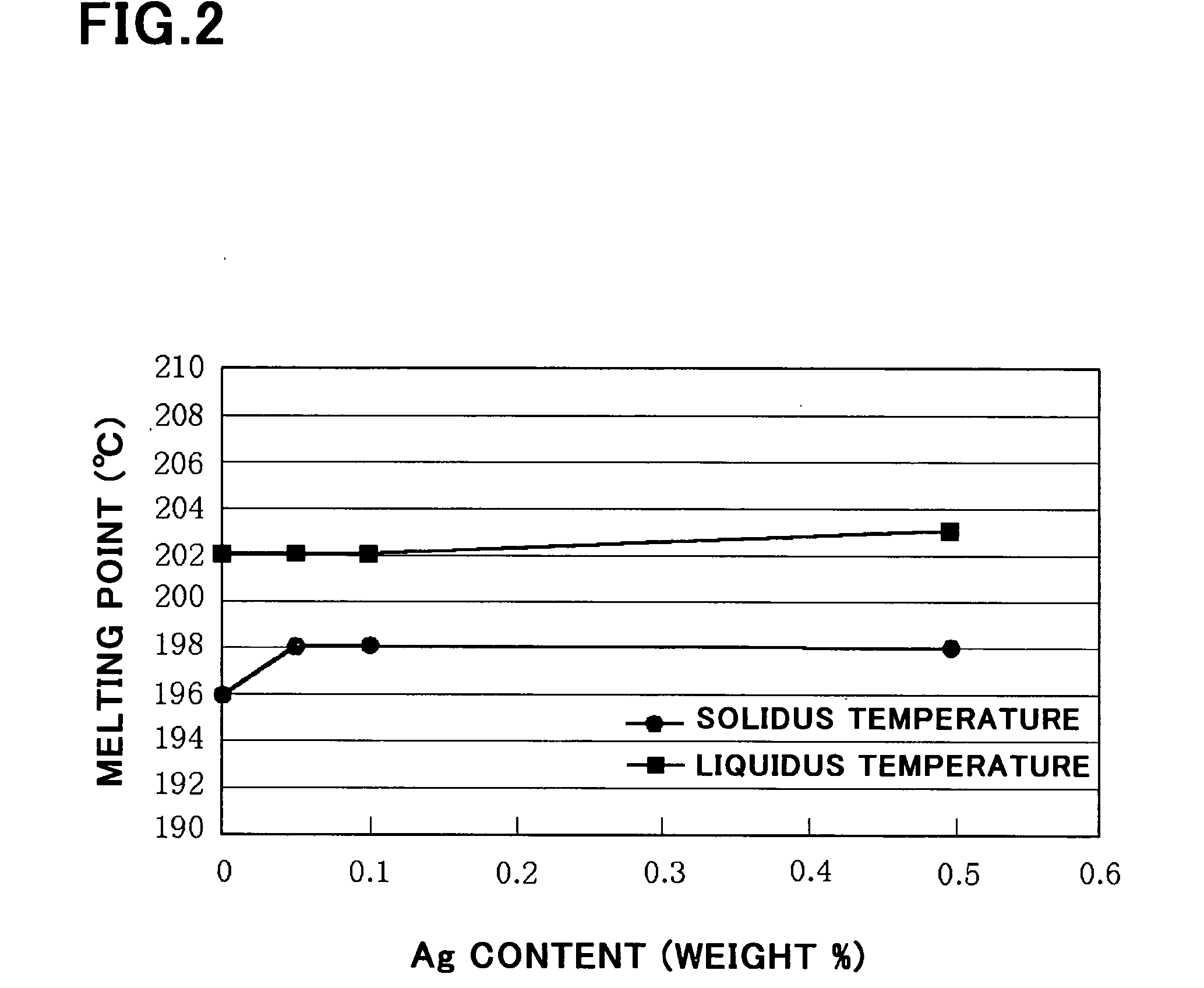Solder and packaging therefrom
a technology of asolder and a packaging, which is applied in the field of asolder, can solve the problems of increasing the temperature of the maximum temperature of the furnace, the inability to meet the requirements of the application, so as to reduce the temperature of the liquidus, increase the tensile strength, and reduce the effect of aging
- Summary
- Abstract
- Description
- Claims
- Application Information
AI Technical Summary
Benefits of technology
Problems solved by technology
Method used
Image
Examples
example 1
[0090] There were fabricated four solder alloys having the following compositions.
(Solder 1)
[0091] Zn content: 8 weight % [0092] Ag content: 0.08 weight % [0093] Bi content: 0 weight % [0094] Remainder: Sn
(Solder 2) [0095] Zn content: 8 weight % [0096] Ag content: 0.08 weight % [0097] Bi content: 1 weight % [0098] Remainder: Sn
(Solder 3) [0099] Zn content: 8 weight % [0100] Ag content: 0.08 weight % [0101] Bi content: 3 weight % [0102] Remainder: Sn
(Solder 4) [0103] Zn content: 8 weight % [0104] Ag content: 0.08 weight % [0105] Bi content: 6 weight % [0106] Remainder: Sn
[0107] Then, the solders 1 to 4 were powdered, and powders having a diameter in the range of 20 to 40 micrometers were separated out. Then, the powders were mixed with weakly-active flux such that a content of the flux was 12 weight %, to thereby fabricate four creamy solders.
[0108] Then, those creamy solders were printed onto Cu substrate electrodes formed on circuit substrates, through a metal mask. Then...
example 2
[0117]FIG. 6 illustrates a relation between a Bi content (weight %) and a tensile strength (MPa) in the solder in accordance with Example 2.
[0118] There were fabricated four solder alloys having the following compositions.
(Solder 1)
[0119] Zn content: 8 weight % [0120] Ag content: 0.01 weight % [0121] Bi content: 0 weight % [0122] Remainder: Sn
(Solder 2) [0123] Zn content: 8 weight % [0124] Ag content: 0.01 weight % [0125] Bi content: 1 weight % [0126] Remainder: Sn
(Solder 3) [0127] Zn content: 8 weight % [0128] Ag content: 0.01 weight % [0129] Bi content: 3 weight % [0130] Remainder: Sn
(Solder 4) [0131] Zn content: 8 weight % [0132] Ag content: 0.01 weight % [0133] Bi content: 6 weight % [0134] Remainder: Sn
[0135] Then, a test piece for measuring a tensile strength was cut out of those solder alloy bulks, and a tensile strength test was carried out in accordance with a tensile strength test defined in JIS Z2241.
[0136]FIG. 6 was obtained based on the results of the tensil...
example 3
[0139]FIG. 7 illustrates a relation between a thermal cycle and a shearing strength (N) in the solder in accordance with Example 3.
[0140] For comparison, FIG. 7 further illustrates data concerning Sn-37 wt. % Pb eutectic solder.
[0141] There were fabricated three solder alloys having the following compositions.
(Solder 1)
[0142] Zn content: 8 weight % [0143] Ag content: 0.01 weight % [0144] Bi content: 3 weight % [0145] Remainder: Sn
(Solder 2) [0146] Zn content: 8 weight % [0147] Ag content: 0.01 weight % [0148] Bi content: 6 weight % [0149] Remainder: Sn
(Solder 3) [0150] Zn content: 8 weight % [0151] Ag content: 0.01 weight % [0152] Bi content: 30 weight % [0153] Remainder: Sn
[0154] Then, the solders 1 to 3 were powdered, and powders having a diameter in the range of 20 to 40 micrometers were separated out. Then, the powders were mixed with weakly-active flux such that a content of the flux was in the range of 10 to 12 weight %, to thereby fabricate three creamy solders.
[01...
PUM
| Property | Measurement | Unit |
|---|---|---|
| Percent by mass | aaaaa | aaaaa |
| Percent by mass | aaaaa | aaaaa |
| Percent by mass | aaaaa | aaaaa |
Abstract
Description
Claims
Application Information
 Login to View More
Login to View More - R&D
- Intellectual Property
- Life Sciences
- Materials
- Tech Scout
- Unparalleled Data Quality
- Higher Quality Content
- 60% Fewer Hallucinations
Browse by: Latest US Patents, China's latest patents, Technical Efficacy Thesaurus, Application Domain, Technology Topic, Popular Technical Reports.
© 2025 PatSnap. All rights reserved.Legal|Privacy policy|Modern Slavery Act Transparency Statement|Sitemap|About US| Contact US: help@patsnap.com



